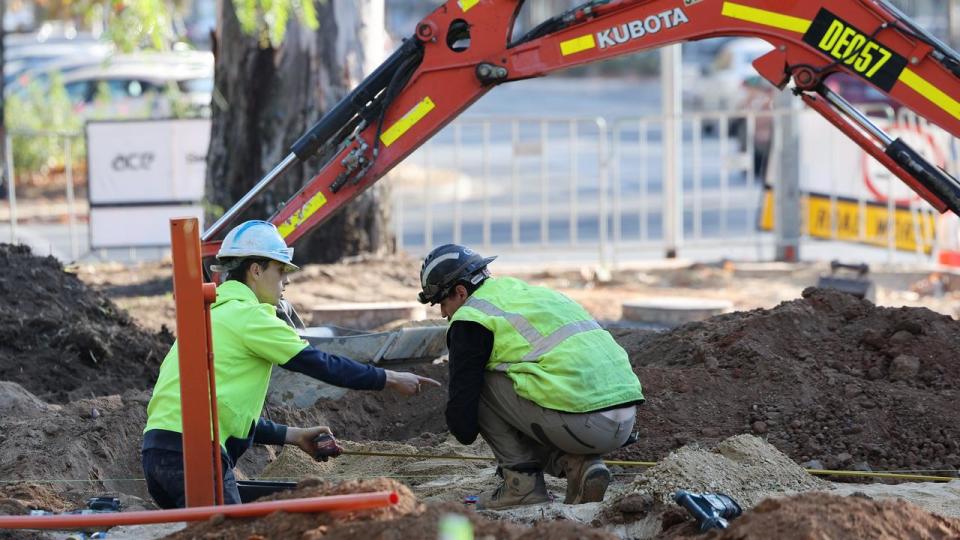More bad news for the housing crisis

The anaemic run of building approvals continue through April, with the weaker-than-expected result adding to doubts that the government’s ambitious target to build 1.2 million well-located homes will be achieved.
Total dwelling approved, a leading indicator of Australia’s residential construction pipeline, slumped 0.3 per cent last month, the Australian Bureau of Statistics said on Thursday, after just 13,078 new homes were signed off for construction.
That figure was below consensus forecasts of an increase of 1.8 per cent.
The decline was driven by a reduction in the number of permits issued for detached houses, down 1.6 per cent, while units and apartments also slipped by 1.1 per cent, according to the seasonally adjusted figures.
Month-to-month, housing permits data are usually very volatile and often subject to significant revisions, however, the recent trend of approvals has trended sharply lower, plunging 43 per cent from its peak of 23,126 in March 2021.
In the year to April, just 163,493 new dwelling permits were issued, a level which has been broadly consistent since December as surging home building costs and elevated interest rates batter construction activity.
The annual result was vastly outpaced by population growth over the same period, which soared by 626,871 mostly due to surging net migration levels.
From July 1, Labor is targeting the construction of 1.2 million well-located homes over five years, requiring a 12 month rolling average of 240,000 new homes.

AMP deputy chief economist Diana Mousina characterised the number of new homes approved as “very low” at a time of strong housing demand.
“The chronic housing supply issue will remain a problem and put upward pressure on home prices and rents,” she said.
NAB senior economist Taylor Nugent said cost growth has moderated somewhat in the construction sector while there had been some easing of capacity pressures in pockets of residential construction.
“But the broader elevated costs backdrop makes it difficult for valuations to stack up for some new projects, off the plan purchasing demand is low, and competition for resources with non-residential building and engineering work pipelines remain a hurdle,” Mr Nugent added.
The housing sector is being closely watched by economists as evidence that the RBA’s aggressive run of 13 interest rate hikes is slowing growth.

 Yahoo Finance
Yahoo Finance 